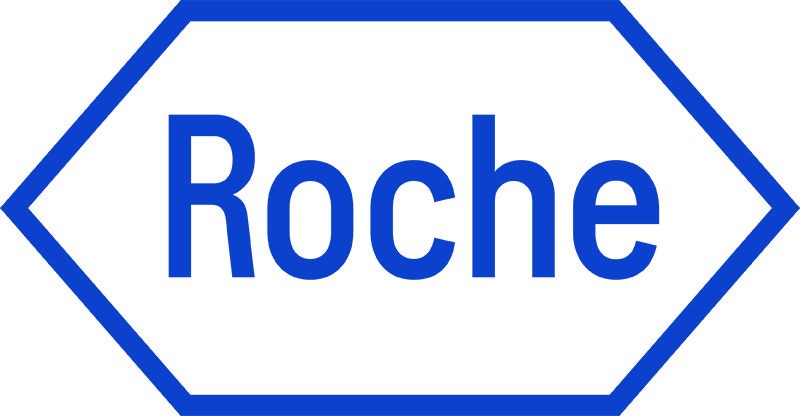
Colorectal cancer is the third leading cause of U.S. cancer-related deaths in men and in women1
Colorectal cancer is a broad term for types of cancer that start in either the colon or rectum. Improved screenings and surgical procedures have reduced the number of cancer deaths due to colorectal cancer for several decades. Similarly, the rate of people being diagnosed with colon or rectal cancer each year has dropped overall since the mid-1980s. Improvements in death and diagnosis rates are attributed to changing diet and lifestyle. However, deaths from colorectal cancer among people younger than 55 have increased 1% per year from 2008 to 2017.1
Colorectal cancers have many things in common
The most common type of colorectal cancer, making up about 95% of all cases, is adenocarcinoma which begins in the epithelial cells in the lining of either the large intestine or
colon. Prior to becoming cancerous, these tissues begin as a small polyp which can be discovered during a standard colonoscopy exam.2
Certain risk factors that are believed to contribute to colorectal cancer can be controlled, including being overweight, a lack of physical activity, a diet high in red meat or processed meat, alcohol consumption, and smoking. Other risk factors that a person cannot change include family history, certain inherited syndromes, previous bouts of intestinal bowel disorder (IBD), a prior history of polyps, and age.3
Roche is committed to helping identify the best possible treatment for each patient by accurately identifying the type of cancer and the likely course of the illness
Our commitment to colorectal cancer includes over 13 antibodies/markers that enable pathology labs to deliver accurate results with confidence. With this knowledge, doctors can identify more patients for the right therapy at the right time.
A colorectal cancer diagnosis provides clues to move forward
Testing to identify abnormal tissue growth or symptoms include physical exams, a stool test to check for blood, blood test to look for anemia, liver enzymes or biomarkers of colon cancer. If signs or symptoms of cancer are detected, an imaging test may be ordered as well as a diagnostic colonoscopy or proctoscopy. Suspected tissue that is removed during one of these procedures will be examined to determine the type of cancer and possible treatment options.
Adenocarcinoma - 95% of cases2
Adenocarcinomas form from abnormal growth of epithelial cells which produce mucus to lubricate the lining of the colon and rectum.
Carcinoid tumors2
These start from special hormone-making cells in the intestine.
Lymphomas2
This is a cancer of immune system cells which can start in the colon, rectum, or other organs. This type of cancer more commonly originates in the lymph nodes.
Gastrointestinal stromal tumors (GISTs)2
These tumors can be found anywhere in the digestive tract, but are not common in the colon. Some are benign (not cancer).
Other forms of colorectal cancer, such as Sarcomas, are rare.
Colorectal cancer data








Biomarker research provides new clues, new opportunities
Rising colorectal cancer rates require new solutions. Significant efforts are focused on developing new methods of detecting the disease early, as well as understanding the varied genetic mutations that propel the growth and metastasis of cancerous tissue.
Tomorrow’s therapy advances will focus on specific biomarkers of CRC, an area of research that fuels our understanding of the disease. Established biomarkers include tyrosine kinase receptors (TKR): Epithelial Growth Factor Receptor (EGFR), Vascular Endothelial Growth Factor Receptor (VEGFR), and signal transduction kinases such as K-RAS, DNA Mismatch Repair (MMR) status, and expression of p53 and linked targeted genes.5
New methods including liquid biopsies are being developed to single out cancerous cells or DNA in blood and urine. Such innovations could improve screening rates while providing an important tool for measuring treatment responses, identifying treatment resistance, and monitoring for disease recurrence.6
Moving toward more targeted, personalized treatments
The push is on for additional CRC treatments that can build on the standard of surgery, chemotherapy, radiation, radiofrequency ablation and cryosurgery. More personalized approaches could result in improved outcomes for patients limited by pre-existing conditions, who have recurrent disease, or who are positive for specific biomarkers of CRC.
Immunotherapy treatments are currently in development to enhance a person’s natural ability to fight cancer. A class of treatment called immune checkpoint inhibitors has been approved for the approximately 5% of cases due to Lynch syndrome, an inherited DNA repair disorder. Researchers are attempting to use immune checkpoint inhibitors in patients with other forms of metastatic CRC, and in combination with chemotherapies, targeted therapies and viruses that are designed to penetrate cancerous cells.6
Targeted therapies are also being explored for their ability to block the activity of abnormal proteins produced by certain genetic mutations linked to CRC, such as to the BRAF gene. Additional targets for targeted therapy include the RAS mutation in approximately 50% of patients, HER-2 amplification, and the p53 mutation.5
Explore our robust colorectal cancer portfolio
Roche has developed highly sensitive and specific colorectal and gastrointestinal diagnostic tools which can identify a range of these malignancies and indicate low or high levels of risk in order to more accurately personalize a patient’s treatment.
References
